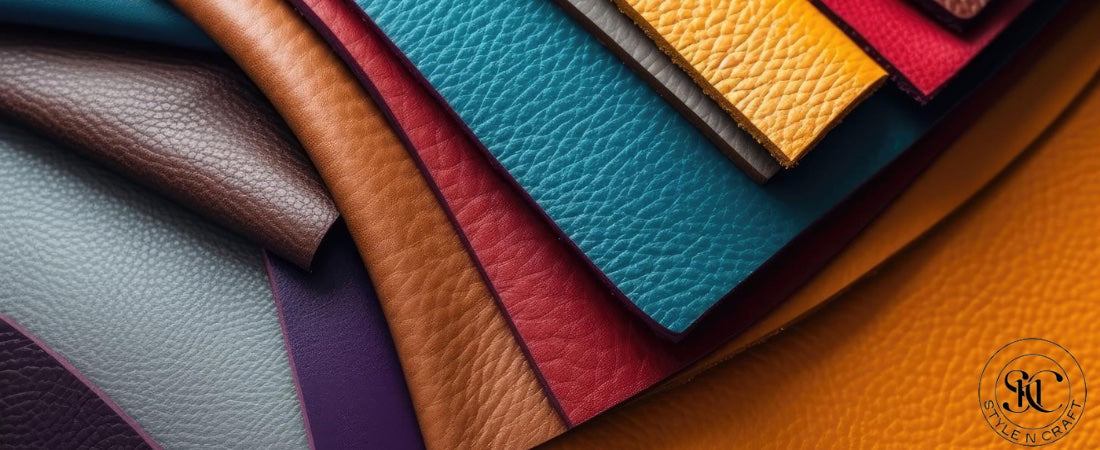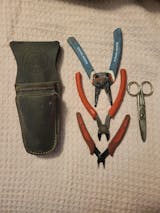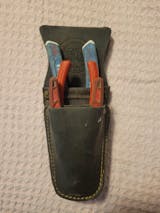In today's world of fashion and interior design, PU leather has become a popular choice for its affordability, versatility, and resemblance to genuine leather. But what exactly is PU leather, and how does it compare to other materials like real leather and faux leather? In this comprehensive guide, we'll delve into the intricacies of PU leather, exploring its composition, manufacturing process, uses, advantages, and much more.
Understanding PU Leather
PU leather, short for polyurethane leather, is a synthetic material made by coating a base layer (usually fabric or split leather) with a polyurethane finish. This finish gives PU leather its characteristic appearance and texture, closely resembling that of genuine leather. Despite being synthetic, PU leather shares many qualities with real leather, making it a popular alternative in various industries.
Composition and Characteristics
PU leather is composed of a base layer, typically made of fabric or split leather, and a polyurethane coating. The base layer provides durability and strength, while the polyurethane finish enhances the material's appearance, texture, and water resistance. This combination results in a material that is soft to the touch, easy to clean, and resistant to wear and tear.
One of the key characteristics of PU leather is its versatility. It can be manufactured in a wide range of colors, textures, and finishes, allowing for endless design possibilities. Additionally, PU leather is more affordable than genuine leather, making it a cost-effective option for consumers and businesses alike.
Manufacturing Process
The manufacturing process of PU leather involves several steps. First, the base layer (fabric or split leather) is prepared and treated to ensure durability and uniformity. Then, a polyurethane coating is applied to the base layer using a variety of methods, such as spraying or laminating. This coating is then cured and finished to achieve the desired texture and appearance.
Unlike genuine leather, which requires the use of animal hides and tanning processes, PU leather is entirely synthetic, making it a more sustainable and cruelty-free option for those concerned about animal welfare.
Uses and Applications
PU leather is used in a wide range of applications across various industries. In the fashion industry, it is commonly used to make clothing, shoes, handbags, and accessories. Its versatility and affordability make it an attractive choice for designers looking to create stylish yet budget-friendly products.
In the furniture industry, PU leather is often used to upholster sofas, chairs, and other seating options. Its durability, ease of maintenance, and wide range of colors and textures make it a popular choice for both residential and commercial settings.
Advantages and Disadvantages
Like any material, PU leather has its pros and cons. One of the main advantages of PU leather is its affordability. Compared to genuine leather, PU leather is significantly cheaper, making it accessible to a wider range of consumers.
Another advantage of PU leather is its versatility. It can be manufactured in a variety of colors, textures, and finishes, allowing for endless design possibilities. Additionally, PU leather is easy to clean and maintain, requiring only regular wiping with a damp cloth.
However, PU leather also has its disadvantages. One of the main drawbacks is its lack of breathability. Unlike genuine leather, which is porous and allows air to pass through, PU leather can trap heat and moisture, leading to discomfort, especially in warmer climates.
Cleaning and Maintenance
Proper cleaning and maintenance are essential for prolonging the lifespan of PU leather products. To clean PU leather, simply wipe it down with a damp cloth or sponge using mild soap or detergent. Avoid using harsh chemicals or abrasive cleaners, as these can damage the material.
For stubborn stains or spills, gently scrub the affected area with a soft brush or cloth. Avoid rubbing too hard, as this can damage the surface of the PU leather. Once clean, allow the material to air dry naturally, away from direct heat or sunlight.
PU Leather vs. Other Types
When comparing PU leather to other materials like real leather and faux leather, there are several factors to consider. PU leather is often more affordable than genuine leather, making it a budget-friendly option for consumers. It is also more versatile, allowing for a wider range of colors, textures, and finishes.
However, PU leather lacks the natural beauty and uniqueness of genuine leather. Genuine leather develops a patina over time, giving it character and charm that cannot be replicated with synthetic materials. Additionally, genuine leather is more breathable and durable than PU leather, making it a better choice for certain applications.
Faux leather, on the other hand, is entirely synthetic and is typically made from polyvinyl chloride (PVC) or polyurethane. While faux leather is similar in appearance to PU leather, it is often less durable and prone to cracking and peeling over time.
Differences Between PU Leather and Top Grain Leather
While PU leather and top grain leather may appear similar at first glance, there are significant differences between the two materials. Top grain leather is a natural material made from the top layer of animal hides, while PU leather is a synthetic material composed of a base layer coated with polyurethane.
One of the main differences between the two is in their composition and manufacturing process. Top grain leather is derived from animal hides through a tanning process that preserves the natural grain and texture of the leather, resulting in a material that is durable, breathable, and develops a patina over time. On the other hand, PU leather is entirely synthetic and lacks the natural characteristics of genuine leather.
Conclusion
In conclusion, PU leather stands as a versatile and affordable alternative to genuine leather, embodying many of its benefits without the high price tag. Its composition, manufacturing process, uses, advantages, and disadvantages render it a favored choice across industries, from fashion to furniture.
When it comes to Leather Work Gear, PU leather offers a pragmatic solution. From tool belts to work gloves, its durability and affordability make it an ideal choice for professionals seeking reliable gear without breaking the bank.
Whether you're in search of a rugged tool pouch or a sturdy work apron, PU leather provides a wide array of options to cater to your needs. With proper care, PU leather work gear can endure the rigors of daily use, ensuring long-term satisfaction and performance.
In the dynamic realms of fashion and design, PU leather remains a steadfast staple, cherished for its versatility, cost-effectiveness, and resemblance to genuine leather. Hence, when considering your next purchase, whether it be for a tool belt or a stylish handbag, opting for PU leather ensures a decision you won't regret.



